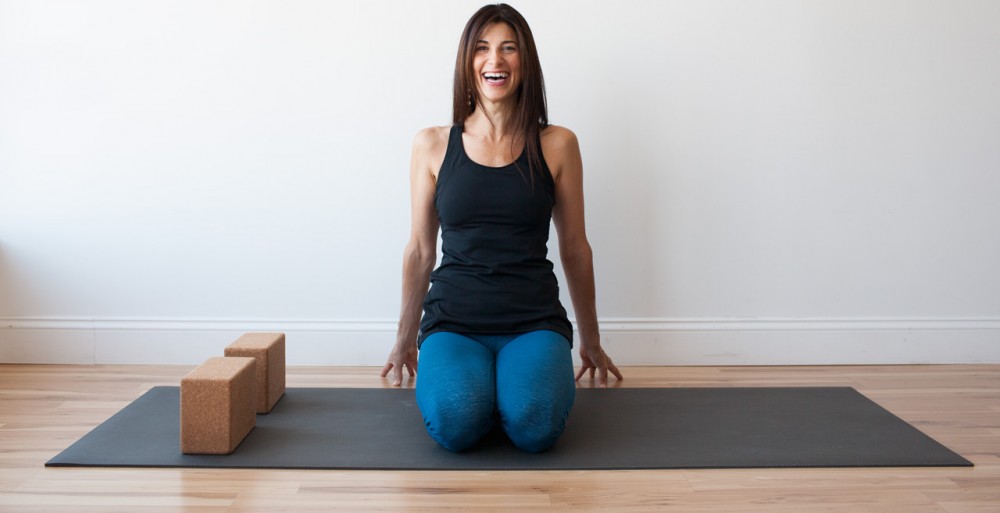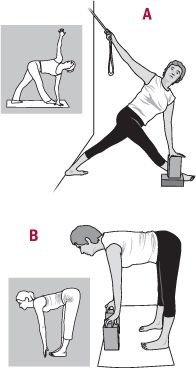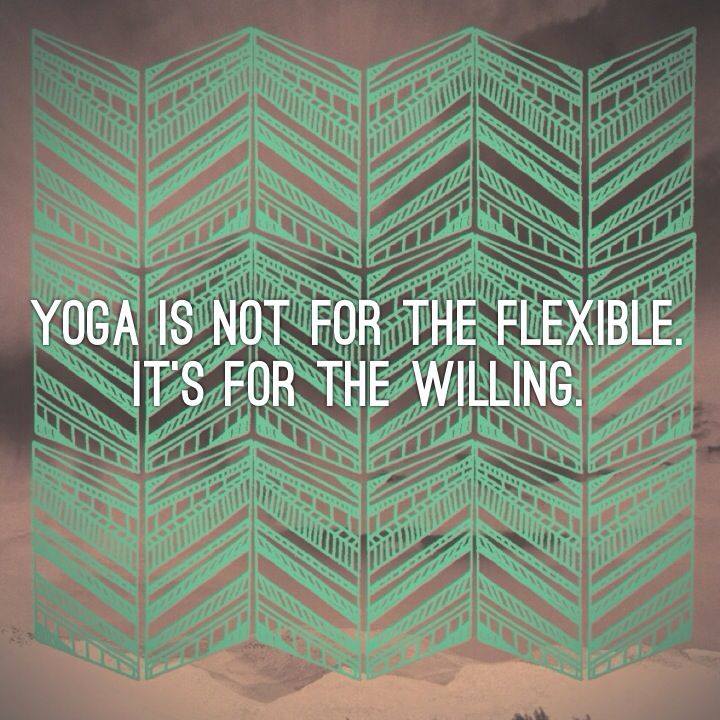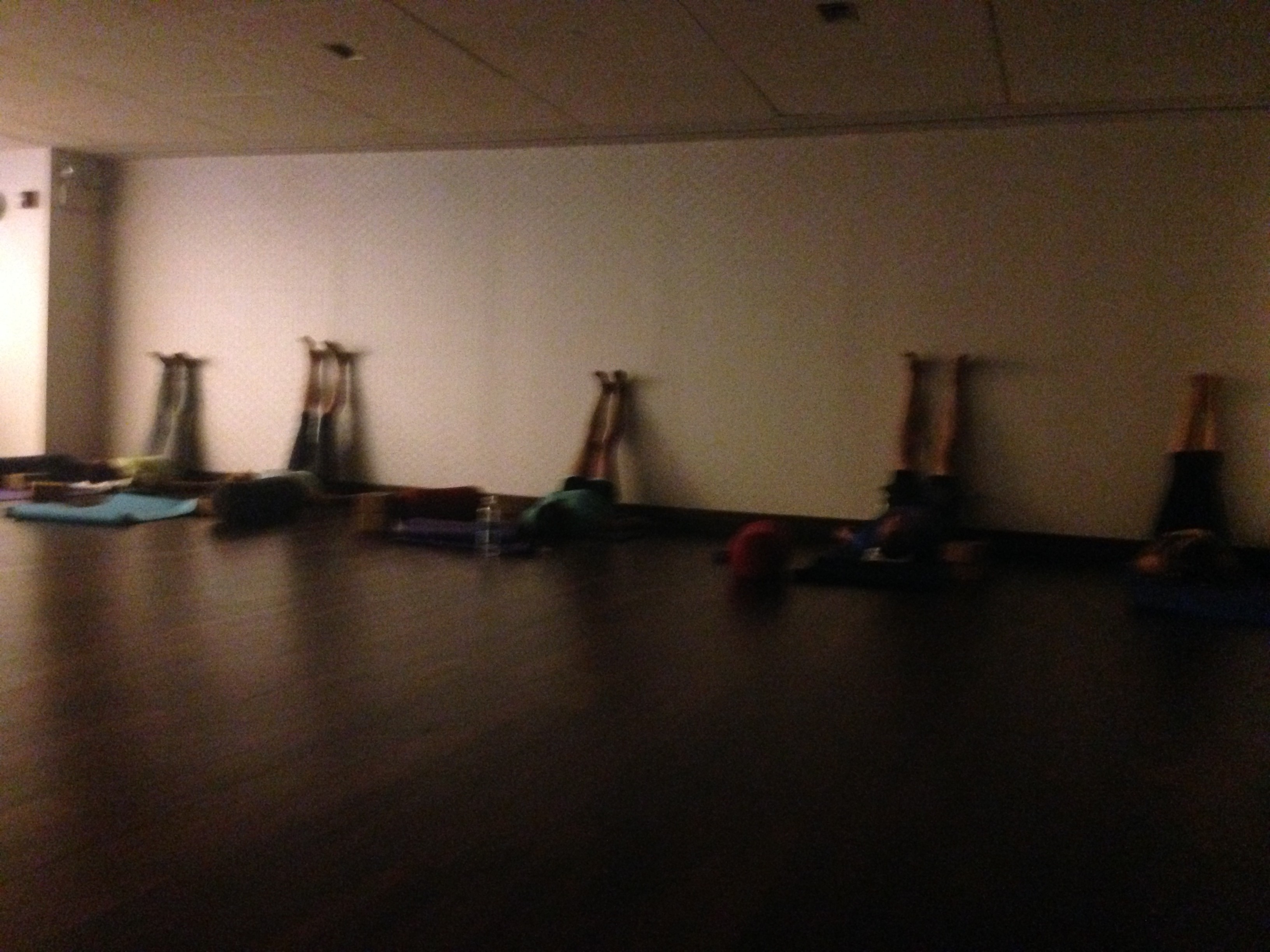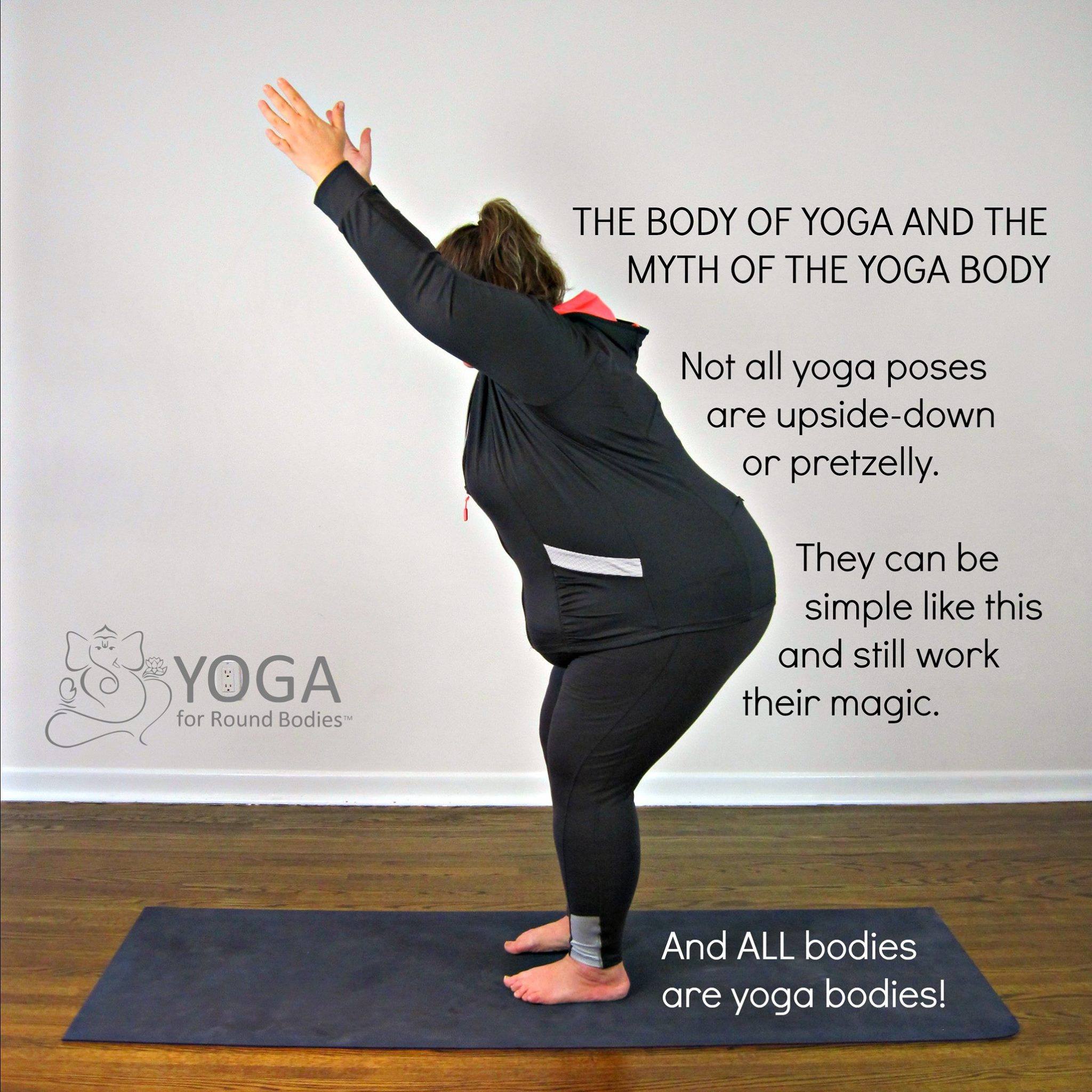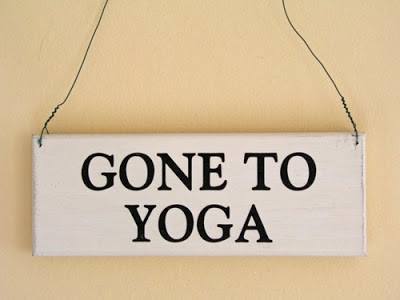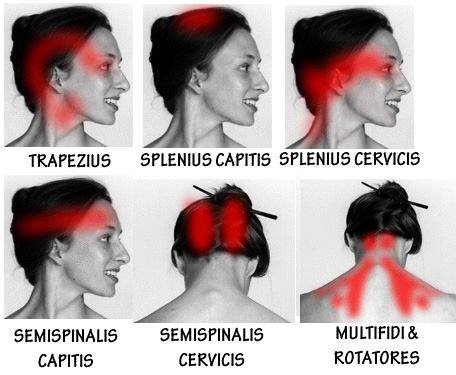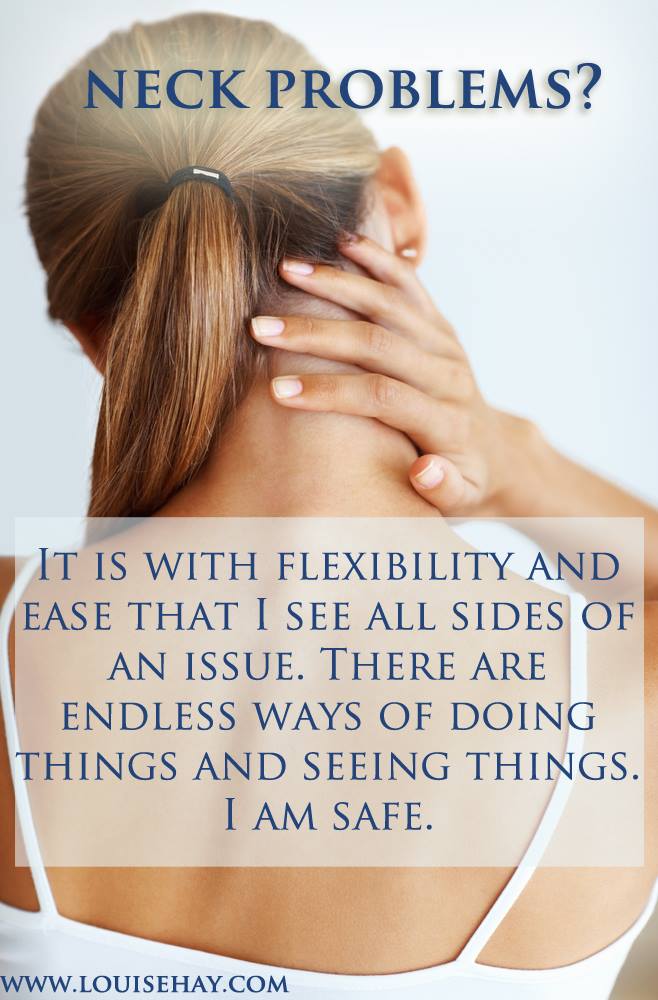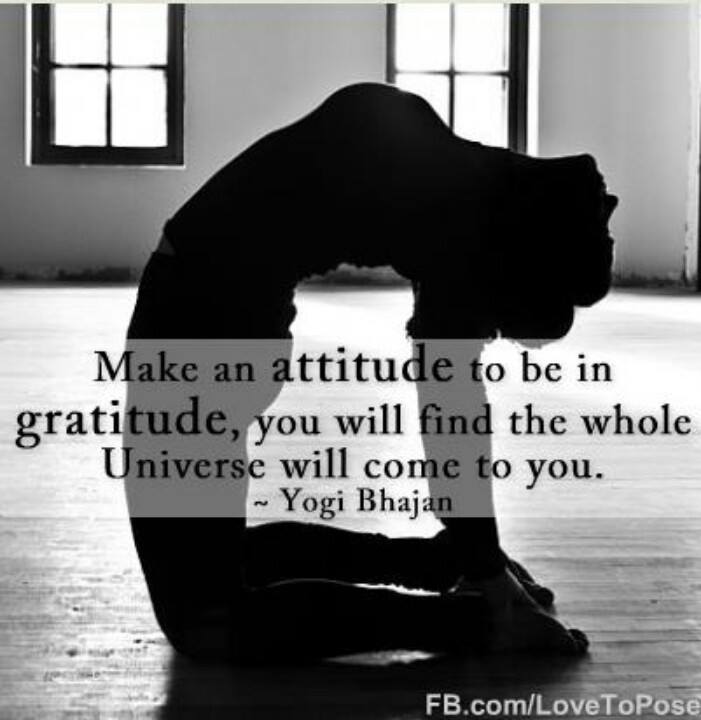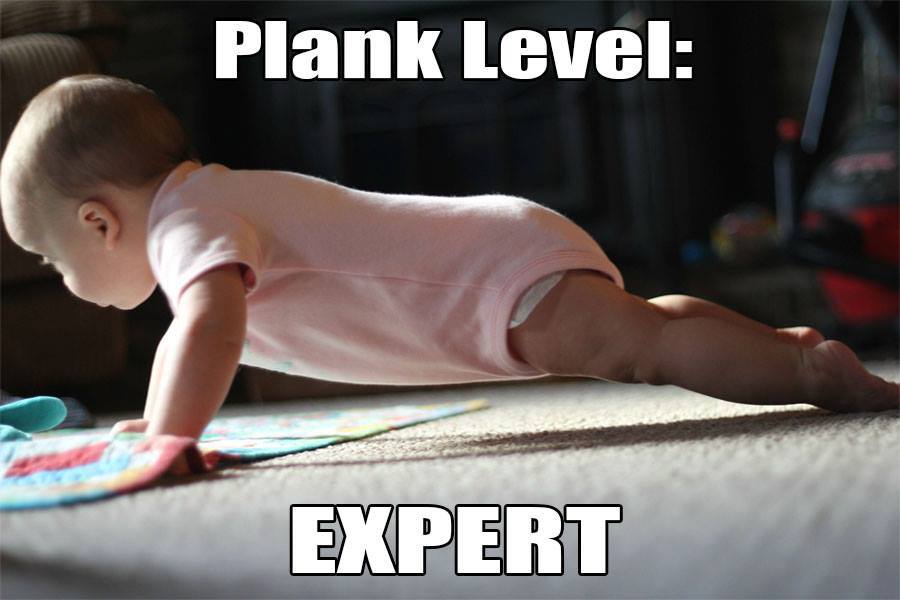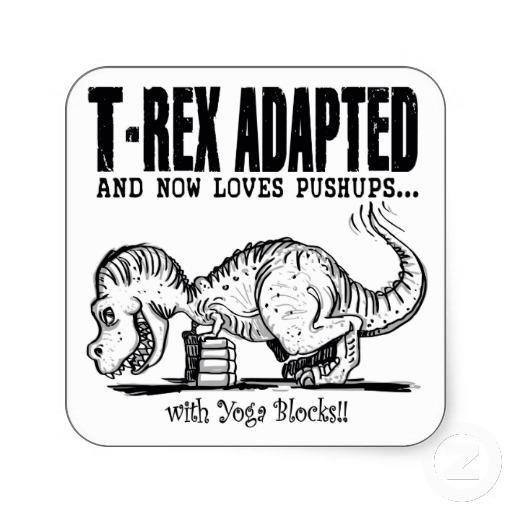Benefits to using yogaprops
Understanding the benefits to using yoga props will help the student access the skill of a particular pose.
Why use the yogaprops ?
While it is true not everyone has a rope wall as in Figure A, the block stack is easily obtainable for a home practice. In fact, some students may even benefit from subbing blocks for a chair. The primary reason for this is to bring the pose closer to the student rather than having the student risk misalignment and overstrain. In both these photos, the student is able to access the skill and stability in the pelvis and legs by bringing hand(s) to blocks to lift and open the chest and lengthen the spine without losing that skill. It can be harder to use props than you would think!
Revolved Triangle Pose
As you can see, in addition to the strap and blocks, the wall is used as a yogaprop in order to stabilize the back leg. Your balance and the rotation of the torso grow from the stability of the legs. She has that, and is using the strap and blocks to help initiate the twist from the back ribs.
Standing Wide Angle Pose
In the variation pictured below, the blocks are used to help extend the breastbone forward and the pubic bone back. Reaching to the floor, if this is a strain for the student, can end up tipping you backwards rather than having the legs vertical with hips above feet.
